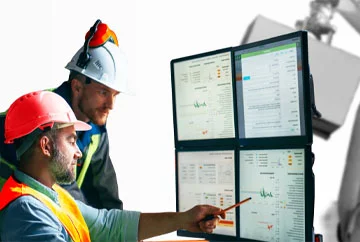The digital foundations of future-proof supply chains
For decades, enterprises have relied on ERP systems as the backbone of their supply chains, managing transactions, financials, and operational workflows. However, in today’s competitive landscape, where supply chains are more dynamic and interconnected, traditional ERP is deficient in delivering the required SCM outcomes.
Future-proof supply chains leverage a three-tiered pattern founded on visibility, which delivers differentiation and continuous innovation through more advanced digital technologies. This pattern is essential for companies seeking to enhance resilience, agility, and efficiency in today’s volatile supply chain landscape.
The three-tiered pattern of modern supply chain architecture
Organizations must adopt an architectural framework that ensures scalability, adaptability, and intelligence to build a future-proof supply chain. This framework consists of three essential layers:
- Foundation Layer: The foundation of any supply chain is a unified, real-time system of records that centralizes inventory, procurement, production, and financial data. It ensures data integrity and end-to-end visibility, reducing reliance on siloed, legacy systems.
- Advanced Layer: The second layer moves beyond visibility to advanced analytics, scenario planning, and proactive risk management. It supports long-term supply chain networks, sales and operations, and fulfillment planning with advanced AI and ML capabilities that cut across ERP-MES integration and unified data models.
- Innovation Layer: This is the final horizon of supply chain transformation. It envisions autonomous orchestration in a state where GenAI, machine learning, and real-time data streams drive continuous optimization. Organizations achieve self-healing supply chain networks in this fully mature state, thrive amidst supply disruptions, and always operate efficiently.
Key supply chain transformation maturity parameters
To bolster their foundations, organizations must focus on robust data harmonization and integrity across ERP and related systems to build a reliable Foundation Layer. As they progress to the advanced layer, enhanced process intelligence emerges through dynamic analytics, scenario planning, and tighter integration of ERP with MES and operational data sources.
Finally, the innovation stage is marked by advanced automation, real-time predictive insights, and self-optimizing capabilities enabled by AI agents and GenAI solutions.
Each step represents a deliberate evolution where increased capabilities lead to measurable efficiency, responsiveness, and resilience improvements, enabling supply chains to thrive in today’s rapidly changing environment. This strategic progression drives competitive advantage and sustainable growth.
OT–ERP integration: The catalyst for intelligent supply chains
While the three-tiered pattern forms the basis of a modern supply chain, OT-ERP integration enables enterprises to realize it fully. Historically, ERP and OT systems have functioned in silos — ERP running business processes and OT handling shop floor and logistics operations. This separation results in setbacks well-known to supply chain executives: data blind spots, slow decision-making, and reactive problem-solving.
Integrating these two ecosystems creates a closed-loop, intelligent supply chain seamlessly connecting planning, execution, and optimization. The first step is establishing baseline visibility by synchronizing IoT, robotics, and warehouse automation with ERP. The next move is to automate decision-making using AI-driven ERP analytics to optimize inventory, production, and supplier collaboration, reducing excess stock and improving on-time delivery. Finally, organizations can mobilize advanced levers to enable self-healing supply chains, where GenAI-powered systems predict and mitigate disruptions autonomously.
By employing this blueprint for our clients, we have helped them achieve up to 80% faster order fulfillment, 20% faster response to disruptions, and minimized inventory bloat.



